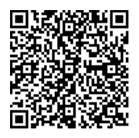
Laszlo Gasztonyi, CTO
The evolution of the healthcare information market continues to accelerate. These changes will increase the opportunities for departmental and enterprise clinical workflow solutions that can bridge the gap of current, mid-term and long-term cost reduction as well as productivity enhancement needs.
Interoperability continues to be a major requirement to drive down costs and is being achieved by the two polar opposite strategies of the “rip and replacing” of existing infrastructure and the providing of an “overlay” solution to an existing infrastructure. When choosing a “rip-and-replace” strategy, the healthcare organization will lose its investment in previously acquired equipment and staff know-how. The perceived advantage is that a single vendor replacement solution will fix interoperability issues moving forward and simplify operations by reducing vendor participation. Unfortunately, many single vendor solutions do not provide multisite interoperability or realize the anticipated savings.
An alternative to ripping out dissimilar systems and replacing them with a single vendor solution is the overlay method. In the overlay method, existing infrastructure as well as staff knowledge of those systems is preserved. An orchestration system, when overplayed on top of the existing systems, acts as the information technology translator from one system to another. Beyond preserving capital equipment and training investments, the overlay solution has the benefit of allowing for productivity gains by leveraging geographically dispersed staffs through work load balancing.
The MEDxConnect solution provides this overlay orchestration ability by connecting to legacy systems and creating workflows that translate and efficiently distribute information from the source to the point of patient care. The overlay market will continue to be a major opportunity for Compressus.
The Company also believes that healthcare organizations are moving from monolithic IT solutions to “de-coupled” componentized solutions. This is exemplified in the radiology department marketplace with Picture and Communications Systems (PACS). PACS for the last two decades have been the medical imaging solution that usually came from an image acquisition device provider.
PACS today have changed little. They remain fairly closed systems consisting of an archive, a viewer(s), and a worklist that is driven by rigid workflow. However, hospital thought leaders are realizing that cost control and productivity gains can be made by decoupling a PACS with an optimized independent archive, a viewer(s), and a worklist solution. Through de-coupling, pricing power shifts away from the monolithic PACS vendor and towards the buyer and best of breed component vendor. The best archive, the best viewer, and the best worklist are procured in a fashion that is modular. The modular nature allows the healthcare organization to purchase the best components for their needs.
MEDxConnect is well positioned as a worklist solution through its superior multi-departmental programmable workflow engine. The workflow engine, much as in the overlay solution, provides productivity gains through our patented work assignment technology. The work assignment allows for dynamic workload balancing and improved patient care by assigning work to the best available clinician. A significant opportunity for Compressus is that the de-coupling of the monolithic vendor solutions provides a cross discipline, cross enterprise opportunity. As requirements mature, the image archive that was embedded in the PACS will now be available for all departmental imaging needs. The archive will include all specialty data types, both structured and unstructured. As this change accelerates, a clinical workflow solution that can interact with the data and translate it within the context of different workflows into unique user displays will be in strong demand.
MEDxConnect has the programmable workflow capability to orchestrate and deliver context-based information to the clinician and the operations staff within this de-coupled marketspace. Compressus believes that the “de-coupled” market is just emerging, and will begin to dominate the strategies in healthcare within the next three to five years. For a time, the overlay and de-coupled type solutions will compete for the same budgets. In fact, a de-coupled solution requires a transitional strategy from monolithic to de-coupled, and the overlay technology that Compressus offers is ideally suited for this.


















